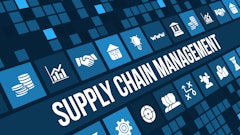In today’s business environment, complexity reigns supreme as supply chains continue to stretch around the world. With this intricacy comes a high level of risk, as companies come to rely on more partners and suppliers for the successful operation of their business.
At E2open, we believe that, to counter the complications stemming from globally distributed supply networks and the risks that come along with them, resilience is key and is tightly linked to the ability to ensure continuity of supply. Viewed in the context of business continuity management, ensuring continuity of supply comes down to sound risk management ideologies.
Maintaining continuity of supply is critical to building your products or delivering any service that is dependent upon material goods. In short, it’s the lifeblood of your company. There are many possible sources of disruption to continuity of supply, but these sources only become active disruptions when companies do not integrate the three must-haves into their supply networks: visibility, intelligent response and network-wide collaboration.
Visibility
The first must-have is visibility. It’s important to note that, in this context, this differs from visualization, a representation of data in an enterprise resource planning (ERP) or planning system. The challenge with visualization is that it’s only as good as the data behind it, so if the data is incomplete, it may not speak the truth and is therefore not a sound basis for making a decision. Instead, what you need is real visibility into multiple locations with actual and projected inventory. When something unexpected happens, the longer it takes to find out that reality deviated from your plan and the worse off you are.
Far-reaching (i.e., multi-tier) visibility into your supply chain is the foundation of the ability to mitigate or even avoid disruptions to continuity of supply; to deal with problems, you first have to know they are there. You need to know they exist before a needed shipment fails to arrive on your loading dock, or a customer calls to complain about a late or missing delivery. If a component supplier is short on inventory and cannot make a shipment to your subassembly provider, who then cannot ship to your contract manufacturer, who then cannot ship your product to you or to your customers, the problem reaches farther back in the supply chain.
Intelligent Response
Having an intelligent response means that you can actually do something with the information that visibility is providing you. So, how do you get this intelligent response?
To respond effectively to new information, you need to know what your options are and you must be able to act on that knowledge. Knowing what your options are starts with visibility and takes off from there. You need comprehensive visibility across your trading partner network to know what your alternatives are—whether in terms of alternate sources of supply for a missing component or alternate means of transportation in the case of a logistics disruption. You need to be able to see everything, but also know what’s relevant.
Next, with all of the relevant data in hand, you must be able to explore alternatives by running multiple what-if scenarios. This exploration is best done with a heuristic planning tool that is tightly integrated with your network and process management capabilities, so you are using the right data in the right context. You also want to be able to do this quickly, so you can evaluate a number of alternatives before the conditions you are trying to address change with time.
Finally, once you know what your options are, you need to be able to choose from them systematically. You need a system that can help you prioritize your actions based on rules that you set up. How you prioritize your options can depend on many factors, such as where you lie in the quarter, the value/priority of a customer relationship or competitive pressures. Having a system with automated rules, that you set according to your strategic priorities, speeds the decision cycle, reduces errors and ensures that each decision is in alignment with corporate goals—whether that means maximizing revenue, profit or customer satisfaction.
Network-Wide Collaboration
Drawing information from across the trading partner network, putting it in the context of the relevant business process with a process management application layer and giving all of the people involved—you and your partners—granular access to the platform based on roles and responsibilities gets everyone on the same page. It’s critical to give those parties the ability to communicate, look together at the projected impact of proposed solutions and decide on courses of action to take.
As a result, you gain the ability to leverage the collective brainpower of your partners, as well as benefit from their deep knowledge of their own operations and the kinds of tradeoffs they can make to help you achieve your goals. Make agreed-upon actions accountable by recording them in the system, and use that same platform to track progress and ensure key milestones are hit. The success of this approach simply comes down to the integration of the trading partner network with process management, planning and analytical applications.
Continuity of Supply Checklist
By incorporating visibility, intelligent response and network-wide partner collaboration into your supply chain, you can identify current problems immediately or predict possible issues early. With this early recognition, you can perform what-if scenarios to determine the best plan of resolution to support your strategy, and then work with your trading partners to collaboratively ensure that those problems don’t become crippling disruptions to continuity of supply and customer service.
As a bit of a cheat sheet, take a look at this checklist to ensure you’re set up for continuity of supply success:
The Continuity of Supply Checklist: Visibility
- Do you have complete, timely data about what supply you have where in your supply chain? Make the shift from emails and spreadsheets, and move to a trading partner network for the most reliable view.
- Can you get a clear picture of the context of the data? Consider the data in the context of a business process to get the best perspective.
- Do you have a good handle on the impact of any deviations from the plan? A key question to ask is, “How will this deviation from the plan impact my ability to deliver products to customers?”
- Bring all of it together with a platform capable of concurrent computations, such as a business network.
The Continuity of Supply Checklist: Intelligent Response
- Do you look for comprehensive visibility across your trading partner network to know what your alternatives are—whether in terms of alternate sources of supply or alternate means of transportation?
- Based on this visibility, are you able to put this information into context to determine what’s relevant? Is the situation impactful to your business, requiring action—or is it just noise?
- Can you run what-if scenarios to explore these alternatives? Are you doing so with a planning tool integrated with your network and process management capabilities?
- Choose the best option as enabled by a system with automated rules in sync with corporate goals.
The Continuity of Supply Checklist: Network-Wide Collaboration
- Are you able to collaborate with your partners on solutions, get their verifiable commitment to the actions they need to take and ensure that they complete these actions?
- Did you implement a strategic platform, one that provides all participants with access to the same information (i.e., a single version of the truth)?
- Did you establish a communications capability tightly linked to that information and to the business processes it is in the context of, as well as the ability to track partner actions to ensure things get done according to pre-standing agreements?
By attaining these three must-haves with a business network that integrates your trading partner network with process management, planning and analytics, you can see problems even before they arise and continuously course-correct to meet your goals. You can determine how to address them in collaboration with your trading partners, implement those fixes and ensure they are carried out—all without having to rely on slow and error-prone manual methods.
For innovative companies in a host of industries, this vision for continuity of supply is a reality today. Begin this journey by implementing these three must-haves to successfully meet the complex challenge of ensuring continuity of supply and reap the many resulting business benefits, including the significant competitive advantage of being able to meet demand effectively and enhance customer satisfaction.



















